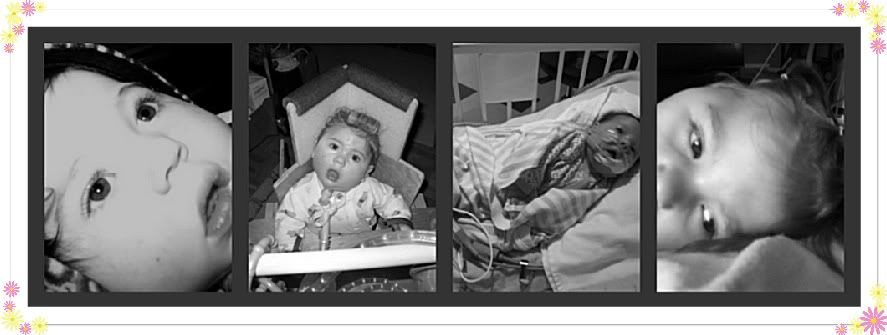AVA HAS BEEN APPROVED FOR SURGERY!We had much accomplished today:) When I arrived at the hospital today I found out that the surgeon (Dr 'K') has given the go ahead to do a Nissen on Ava next week. Also, Ava has had 3 bad 'spells,' as the nurses call them, where she'll be in a sound sleep and wake up, throw her head back, her face gets real red, her arms and legs stiffen up and she starts breathing really fast. Given her history, they automatically thought she was having siezures because of her history. So they called in a neurologist and had me speak with him. After asking me several questions about the suspicious movements she's done in the past, he actually agreed with me that they were reflux related and agreed to start weaning her off of phenobarbitol at one year of age. Yay! Progress is being made. Below I copied an article that I googled that explains, in detail, about the surgical procedure Ava is having.
Laparoscopic Nissen Fundoplication Procedure to Correct Acid Reflux (GERD)
What is GERD?
Gastroesophageal reflux disease (GERD) is a digestive disorder that is caused by gastric acid flowing from the stomach into the esophagus.
Gastroesophageal refers to the stomach and esophagus, and reflux means to flow back or return. Gastroesophageal reflux is the return of acidic stomach juices, or food and fluids, back up into the esophagus. After food passes through the esophagus into the stomach, a muscular valve called the lower esophageal sphincter (LES) closes, preventing the movement of food or acid upward. Gastroesophageal reflux occurs when the LES relaxes inappropriately, allowing acid from the stomach to flow backward into the esophagus.
Heartburn, also called acid indigestion, is the most common symptom of GERD.
If left untreated, gastroesophageal reflux can cause esophageal ulcers, esophageal bleeding, and narrowing of the esophagus (peptic stricture).
A hiatal hernia may be associated with GERD. Severe heartburn may also result from hiatal hernia. A hiatal hernia is caused by an opening in the diaphragm, a flat muscle that separates the chest from the abdomen, allowing a portion of the stomach to protrude into the chest. This condition can then cause the LES to fail. Although most cases of gastroesophageal reflux are caused by a weakened valve, there are other causes that need to be assessed by your doctor.
How is GERD usually treated?
Treatment can include lifestyle changes, such as weight reduction, avoiding certain types of food and taking medications to alleviate symptoms. Surgery may be an option when treatment with medications does not completely relieve symptoms. It's also a good option for patients whose symptoms are well controlled but who don't want to take medication, and for patients with complications of reflux disease, such as ulcers, strictures or Barrett's esophagus.
Anti-reflux operations (Nissen fundoplication) may help patients who have persistent symptoms despite medical treatment.
What is Nissen fundoplication?
During the fundoplication surgery, the surgeon improves the natural barrier between the stomach and the esophagus by wrapping a part of the stomach known as the gastric fundus around the lower esophagus. This prevents the flow of acids from the stomach into the esophagus, and strengthens the valve between the esophagus and stomach, which stops acid from backing up into the esophagus as easily. This procedure is often done using a laparoscopic surgical technique. It can also be done as traditional (open) surgery.

No comments:
Post a Comment